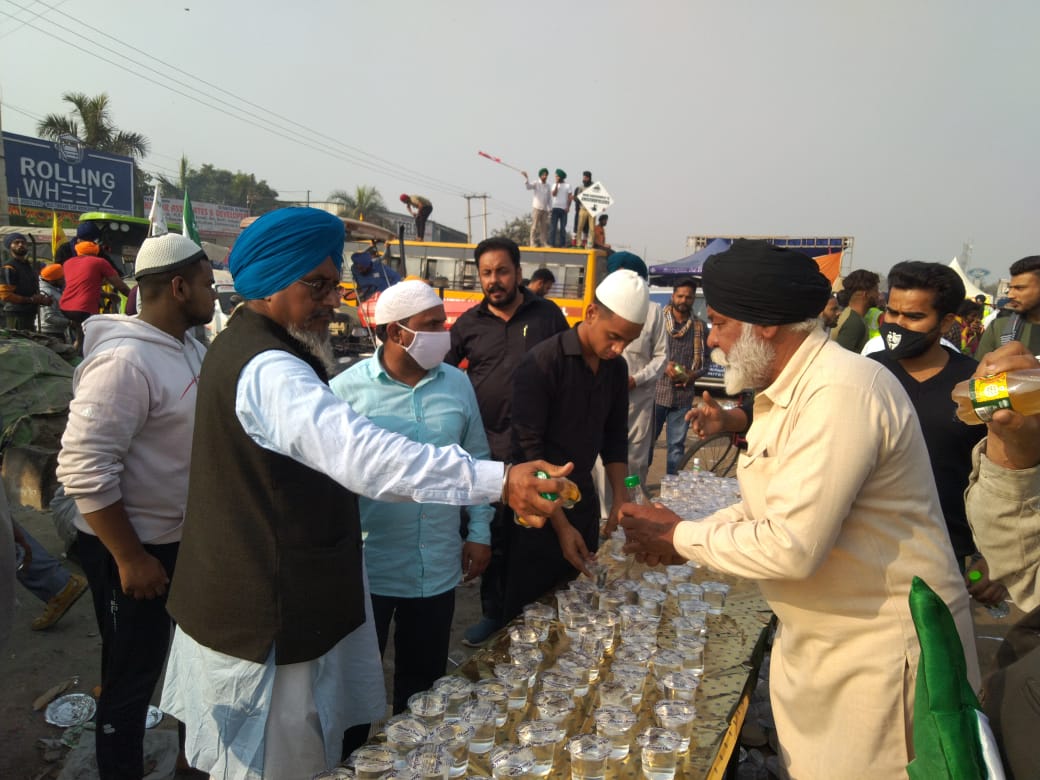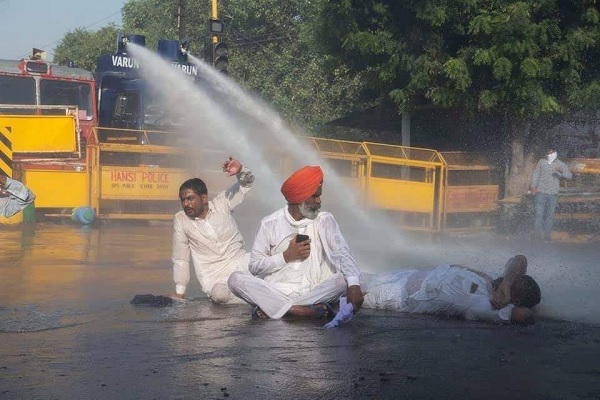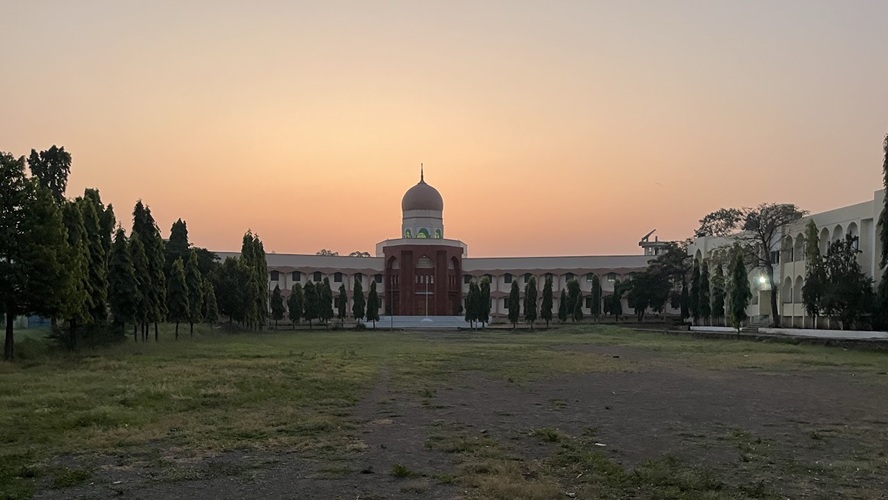GROUND REPORT
Protesters at Singhu border on the outskirts of Delhi carry placards declaring ‘We are farmers, not terrorists’
Shaheen Nazar
SINGHU BORDER, NEW DELHI — A DEEP SENSE OF HURT AND ANGUISH PREVAILS AMONG AGITATING FARMERS OF PUNJAB CAMPING AT THE SINGHU BORDER ON THE OUTSKIRTS OF DELHI. ATTEMPTS BY BHARATIYA JANATA PARTY LEADERS AND CERTAIN TELEVISION CHANNELS TO LINK THEM TO THE SEPARATIST MOVEMENT OF KHALISTAN AND BRAND THEM AS TERRORISTS HAVE SENT A SHOCKWAVE AMONG THE FARMERS.
This was evident from the conversations that this journalist had with the protesters on Sunday. Placards in Hindi and English declaring “We are farmers, not terrorists” were being carried by groups of people. Talk to anyone; ask any question, the conversation comes down to the accusations levelled against the sons of the soil.
“They are calling us terrorists. Do we look like terrorists? We are peaceful people. Modi is trying to usurp our lands. He wants to give our lands to Ambanis and Adanis. We are opposing this. Is fighting for our right terrorism?” These are some of the questions that are raised as soon as they realise you are a journalist.
Their ire is specially directed at “Godi Media” a term used these days for television channels toeing government lines. The villain of the piece here is Sudhir Chaudhari of Zee News who first made the allegation which has been strongly refuted by the leaders of farmers. NDTV and its star anchor Ravish Kumar are spoken of highly here.

The farmers are opposing three farm laws that have been hastily pushed through Parliament ignoring concerns of the Opposition. They doubt the government’s intention and believe provisions of the new laws are against their interest and favour corporates. They are especially wary of Prime Minister Narendra Modi, who, they say, wants to benefit his wealthy friends.
“Modi is showing the same cruelty to us that the Congress in the past committed. His party will meet a similar fate. Sikhs have been supporters of BJP. Now after coming to power, Modi has become arrogant. He thinks he can impose his will on anyone just because he has strength in Parliament. But his power will not last forever. Those who have elected him can also dislodge him,” said a Sikh protester who was seconded by people around him.
Another farmer, a Sikh in his twenties, interrupted to make his point. “Farmers in Punjab love their land. If there is a dispute over a piece of land, they don’t hesitate to kill their brother. They are so attached to their land. Now Modi is trying to take away that land. How can they allow this to happen. No way,” he said in a determined voice.
As the conversation was on, a young boy appears and raises slogan in Hindi, “kisan ekta” (farmers’ unity). The small crowd around him responds with “Zindabad” (long live). The sloganeering continues for a while. The crowd disperses. Soon another group of people surround you. Everyone is charged. Everyone has something to say.
The discussion turns to the contribution of Punjab farmers to India’s Green Revolution, a reference to government policy of the 1960s when modern technology was employed to increase farm yield in order to alleviate hunger and poverty.
“Our elders responded to the government call for increasing farm production. They worked very hard to make India self-reliant in food. Then we earned praise from the government. Now we are being called terrorists, just because we are opposing your unjust laws,” said another farmer.
This is the second time in a year that the national capital has witnessed public protest on such a massive scale. Last year, it was Shaheen Bagh in the heart of the city which saw burqa-clad Muslim women blocking a busy road to register their protest against the CAA and NRC. This year, it’s the turn of farmers who on their way from Punjab to Delhi’s Jantar Mantar have been stopped at the Delhi border. Farmers coming from Uttar Pradesh and beyond have been stopped at Ghaziabad in UP.

A very important feature of protesters at the Singhu border is the langars (free kitchens) throughout the length and breadth of the venue spread over 25 km. People managing the langar are eager to show their hospitality to anyone and everyone passing by. Each langar has its own variety, from roti to plain rice and dal (lentil) to veg pulao to sweet dishes. Besides, there are stalls offering tea, lassi, badam milk and kheer. Then there are individuals or groups of individuals who are distributing fruits and dry fruits.
A group of students were distributing tubes of mosquito-repellent cream. There was a family of three (husband, wife and daughter) who were distributing warm socks and torches.






0 Comments